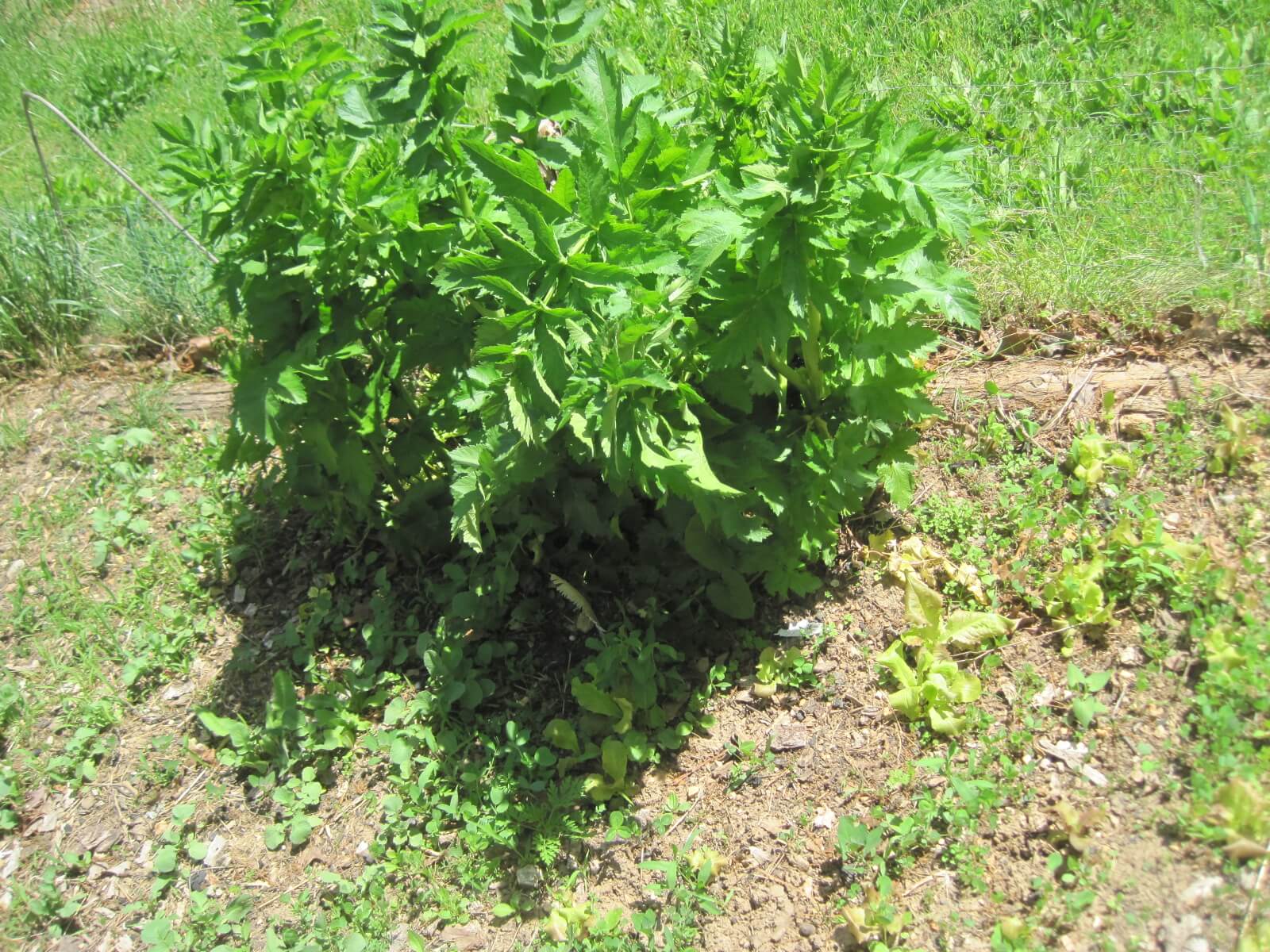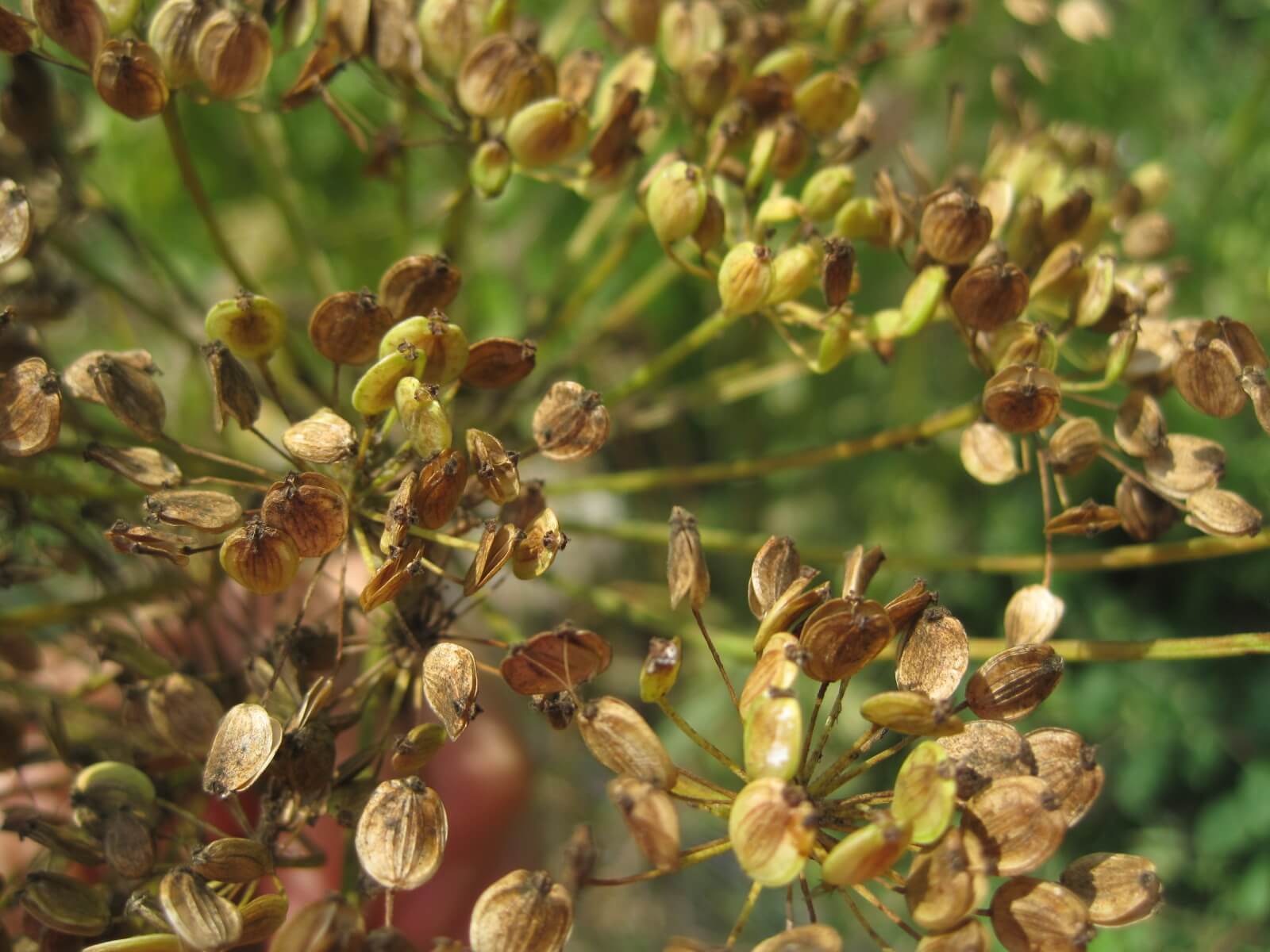I find it oddly infuriating when plants are described as old-fashioned — as if a living, growing thing occupies the same category as powder blue tuxedos, platform shoes, or rotary telephones.
You’ll often find parsnips described with this unsuitable adjective, but that’s merely because they’re a root vegetable that’s been around and depended on for a long, long time. Rather than consigning these delicious white taproots to the annals of dusty history, I can prove to you what a relevant and dependable crop they can be in your garden this year.
I never go a spring without putting the flaky, paper-thin seeds of parsnip into the ground … maybe with this article, I can convince you to do the same.

What Are Parsnips?
For those unfamiliar with parsnips at the dinner table, you can think of them in a similar vein as carrots. They are members of the same family, have a similar shape, and share the same word in Latin (Pastinaca). The Romans were fond of them. Where carrots and parsnips differ is in flavor and use. Parsnips are typically consumed cooked, rather than raw, and have a distinctive sweet, spicy flavor and starchy, almost potato-like texture. Post-frost parsnips are sweet enough that they were used as a sweetener in the days before the refined sugar trade took over the oceans, and added its sordid record to the annals of history. Those interested in old cookery can find lots of historical recipes for parsnip soups, cakes, and sweets.
In my own kitchen, I find that they’re wonderful roasted, and I particularly enjoy them in stir-fry with beef, where they complement sweet-spicy sauces perfectly. I save all the scrubbed root peelings and awkward trimmed bits, and dry and roast them as a passable caffeine-free coffee substitute.

Growing Parsnips
Parsnips like rich, deeply-worked soil as free of rocks as you can manage. The final, mature roots may be up to 15 inches long if you did a good job, so prepare soil for parsnips as you would carrots, but more so.
I try to prepare my parsnip beds the fall before I plant by working them deeply, covering them with at least 2 inches of soiled barn bedding, and letting them sit all winter. Come early spring, as soon as the soil can be worked, I make furrows in the mulch, dig out the inevitable crop of rocks that seemed to have appeared out of nowhere, and plant seeds. Sow the papery discs more thickly than other seeds — even fresh seeds have a reputation for spotty germination.

Parsnip seeds can germinate in 45-degree Fahrenheit soil, so you don’t need to wait long to get them in the ground. Once you do get them into the ground, the name of the game is patience. First off, they take (what feels like) forever to sprout. In the 3 to 4 weeks it sometimes takes for a radish or bok choy to reach harvestable size, parsnip seeds might decide to put out their first seed leaves. For that reason, many gardeners will plant spring radishes and parsnips in the same place — the radishes will mark where you put those slowpoke parsnips, and they’ll give you a harvest before the things (finally) decide to break the ground. Once they do sprout, thin them rather ruthlessly so that they can develop fully-formed roots.
As far as pests go, parsnips are pretty unproblematic. At best, you’ll see the caterpillars of swallowtail butterflies hidden among their leaves. I never bother with them. They don’t too much damage to the foliage, and I always enjoy the sight of the adults dancing over the garden. Aphids may also infest the second-year seed stalks, but again, they are more of an annoyance than a real problem.

The seeds planted in March or early April won’t be ready to harvest until at least 150 days later, but they are usually dug after the frosts return in the fall. Wherever you plant parsnips means that garden space will be occupied for three or four seasons of the year. But what the humble parsnip lacks in speediness it more than makes up for in can’t-kill-it hardiness.
Parsnips can shrug at drought. Parsnips laugh at frost. And in my zone 6 garden, parsnips can happily wait in the ground the entire winter until I get around to digging them; freeing up my indoor storage space for more sensitive, needy roots (I’m looking at you, beets).
Harvesting Parsnips

When it’s finally time to dig your parsnips, you’ll have to really dig. They don’t just pull out of the ground like a carrot, and I usually end up using my hand mattock or hori-hori knife to loosen up the soil around the parsnip, remove as much of the soil as possible, then pull the roots only when I can get a whole hand wrapped around it. Even so, the ends may frustratingly break before you get the whole thing out.
That said, I’m harvesting parsnips in a less than ideal 4-year-old garden. Those using well-established gardens or raised beds will have a much easier time.

The plentiful greens can go in the compost pile or to your chickens. They are debatably edible, from my own research. Some resources say that they’re fine, others don’t. I’ve eaten them and didn’t enjoy them much, so I am content to consign them to the coop and bring the sweet white roots to the kitchen.
Saving Parsnip Seed

If you’ve never tried your hand at overwintering biennials to save seeds, parsnips are a great, confidence-boosting place to start. They’ll survive winter, no problem. And though they’re in the carrot family, they won’t cross-pollinate with any other plants in your garden unless you plant two varieties of parsnip, which of course, isn’t recommended for seed savers. One seed will become hundreds, giving you an additional harvest that will, with good planning, negate your need to ever buy parsnip seeds again.

That said, you have to be prepared for the fact that 2nd-year parsnips are big. As in, taller than 5 feet at times. Gardeners in the Northern hemisphere will be best served by planting them along the northern edge of the garden, where they won’t cast a shadow over your newly planted peas, radishes, and lettuce.

Seeds will develop on large umbels with the umbel on the main stalk being the biggest. Seeds are mature when they start to fall off — dry and brown, not green and juicy. My personal method of cleaning the seeds is to take a mesh bag, carefully place it over the largest umbel, and cut it off the plant. Then, I rub the closed bag between two hands to loosen the papery, flat seeds from their stems. Eventually, the bottom of the bag will be filled with seeds and the empty stem can be composted.
Parsnip seeds are somewhat infamously short-lived with many seed-saving resources stating that they’ll only be viable for a year. Fresh seed is always best, but I have planted 5-year-old parsnip seeds successfully. I just had to plant them rather thickly to get any sort of results.
Some Misunderstandings About Parsnips
There are several big misunderstandings about parsnips that probably block its modern popularity, and all of them are due to ignorance, rather than any fault of this tasty root. As an avid parsnip gardener and appreciator, I’d like to do my part to clear these up.
These misunderstandings are often found in guidebooks and wild plant guides where you’ll hear of the nefarious wild parsnip, which is a vicious plant that will give you such a severe, blistering rash you’d wish you’d never been born. Other books, such as Bert Greene’s 1984 Greene on Greens state that parsnips were poisonous before cultivation, which is why cultivated parsnips that escape the garden and grow wild, revert to a former poisonous state and aren’t safe for eating. Furthermore, there are old wives tales that state any parsnip that is left in the garden over the winter becomes poisonous by spring.
So, does the parsnip I’ve just spent a whole article extolling harbor a latent nefarious streak? The short answer is no. I’ll explain.
First off, there are no differences between wild parsnips growing in a forested holler and cultivated parsnips growing in the garden. They are both Pastinaca sativa, the exact same species of plant. Parsnips were brought to the United States from the old country a long time ago, and have successfully escaped cultivation for centuries. The ones growing in the wild will have weirder shaped roots than those growing in a nice, raised bed, but they’ll taste the same and be poison free, guaranteed.

I suspect that one part of the poison-fear comes from sharing a similar name to water parsnip (Sium suave) a totally different, edible wetland plant that has been used as a food source for centuries by different indigenous tribes. There is a case of a 14-year-old Cree boy dying from mistakenly harvesting and eating water hemlock while foraging for water parsnip. The four species of water hemlock plants are among the most poisonous in the U.S. and their threat is serious. Any association with the plant — even if it’s a mix-up — can relegate plants to the “avoid at all costs” pile in folks’ minds.
This same similarity is probably what led to the old wives’ tale about sudden toxicity from overwintering, which is also untrue. The USDA actually investigated some poisoning cases attributed to overwintered parsnips, and found that, as before, it was due to eating misidentified water hemlock.

The moral to this story is that if you decide to forage for wild-growing parsnips, rather than growing them in the garden, be ABSOLUTELY sure to know how to accurately tell the difference between real parsnips and the four water hemlock species. Though I can’t stand folks using scare tactics to convince others that foraging is dangerous (as evidenced by our many foraging articles and videos on Insteading), this is the one circumstance where the threat holds weight.
For those looking to educate themselves and know how to forage for these plants without ignorant fear, Samuel Thayer gives an excellent break-down on how to accurately identify water parsnip, wild parsnips, and all the water hemlock species in his books The Forager’s Harvest and Incredible Wild Edibles.
Now all that said, these warnings about so-called poison parsnips (a.k.a. misidentified water hemlock) only apply to those you forage outside the garden. The plants you put in your own soil are obviously not going to miraculously transform into water hemlock behind your back, so the warnings are irrelevant to the gardener.
Now that we have the “poison” part out of the way, what about that mention of rashes? Well, that’s a different matter. There is a small potential to get an irritating rash from handling parsnip foliage, but you need a very specific set of circumstances. If you want to get a blister-filled rash, you need to work up a good sweat, break the plant enough to have juice come out, rub the juice into the sweaty skin, and then expose it to the sun. But I’ll contend that you also need some new hobbies if photodermatitis is your idea of a good time.
The truth is, this specific series of instances almost never happens to the normal gardener, and the threat is minimal. Personally, I’ve grown parsnips for five years now. Though I usually garden with gloves on, I’ve bare-handed their greens and never gotten a rash. So don’t work up a sweat fearing your parsnips and just enjoy them instead.
I hope this brief introduction to one of my favorite garden vegetables has whet your desire to know them better. They may take longer to grow than a cucumber or tomato, but they have been my consistent garden companions for years, always offering up a dependable harvest of nutrient-rich roots right when I need them. Let’s make these vegetables the current fashion this spring.
